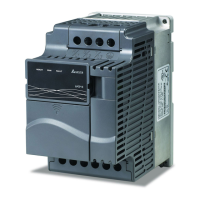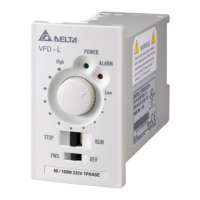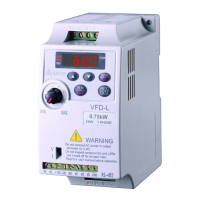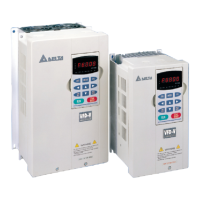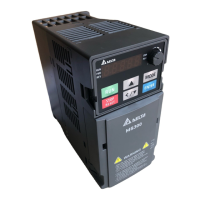Chapter 12 Description of Parameter SettingsMS300 (High Speed Model)
12-07-10
Setting 0: when AVR function is enabled, the drive will calculate the output voltage by actual
DC-BUS voltage. The output voltage will NOT change when DC-BUS voltage changes.
Setting 1: when AVR function is disabled, the drive will calculate the output voltage by actual
DC-BUS voltage. The output voltage will be changed by DC-BUS voltage. It may cause
insufficient / over current or shock.
Setting 2: the drive will disable the AVR when deceleration to stop, and may accelerate to brake.
When the motor ramps to stop, the deceleration time will be shorter when setting this parameter
to 2 with auto acceleration / deceleration, the deceleration will be more stable and quicker.
Filter Time of Torque Command
Factory Setting: 0.050
Settings 0.001~10.000 sec.
When the setting is too long, the control will be stable but the control response will be delayed.
When the setting is too short, the response will be quicker but the control may be unstable. User
can adjust the setting according to the stability of control and response time.
Filter Time of Slip Compensation
Factory Setting: 0.100
Settings 0.001~10.000 sec.
The response time of compensation can be changed by Pr. 07-24 and Pr. 07-25.
If Pr. 07-24 and Pr. 07-25 are set to 10 seconds, the response time of compensation is the
slowest. However, the system may be unstable if the time set is too short.
Torque Compensation Gain
.
Torque Compensation Gain (Motor 2)
Torque Compensation Gain (Motor 3)
Torque Compensation Gain (Motor 4)
Factory Setting: 0
Settings IM: 0~10
When the motor load is large, a part of drive output voltage is absorbed by the resistor of stator
winding,
therefore, the air gap magnetic field is insufficient, which causes insufficient voltage at
motor induction and result in over output current but insufficient output torque. Auto torque
compensation can auto adjust output voltage according to the load, and keep the air gap
magnetic fields stable to get the optimal operation.
In the V/F control, the voltage will decrease in direct proportion with the frequency decreased. It
will cause the torque decreasing at low speed due to the AC resistor is smaller while DC resistor
is unchanged. Therefore, auto torque compensation function will increase output voltage in low
frequency to get higher start torque.
When compensation gain is set too large, it may cause motor overflux and result in too large
output current, motor overheat or protection function be triggered.

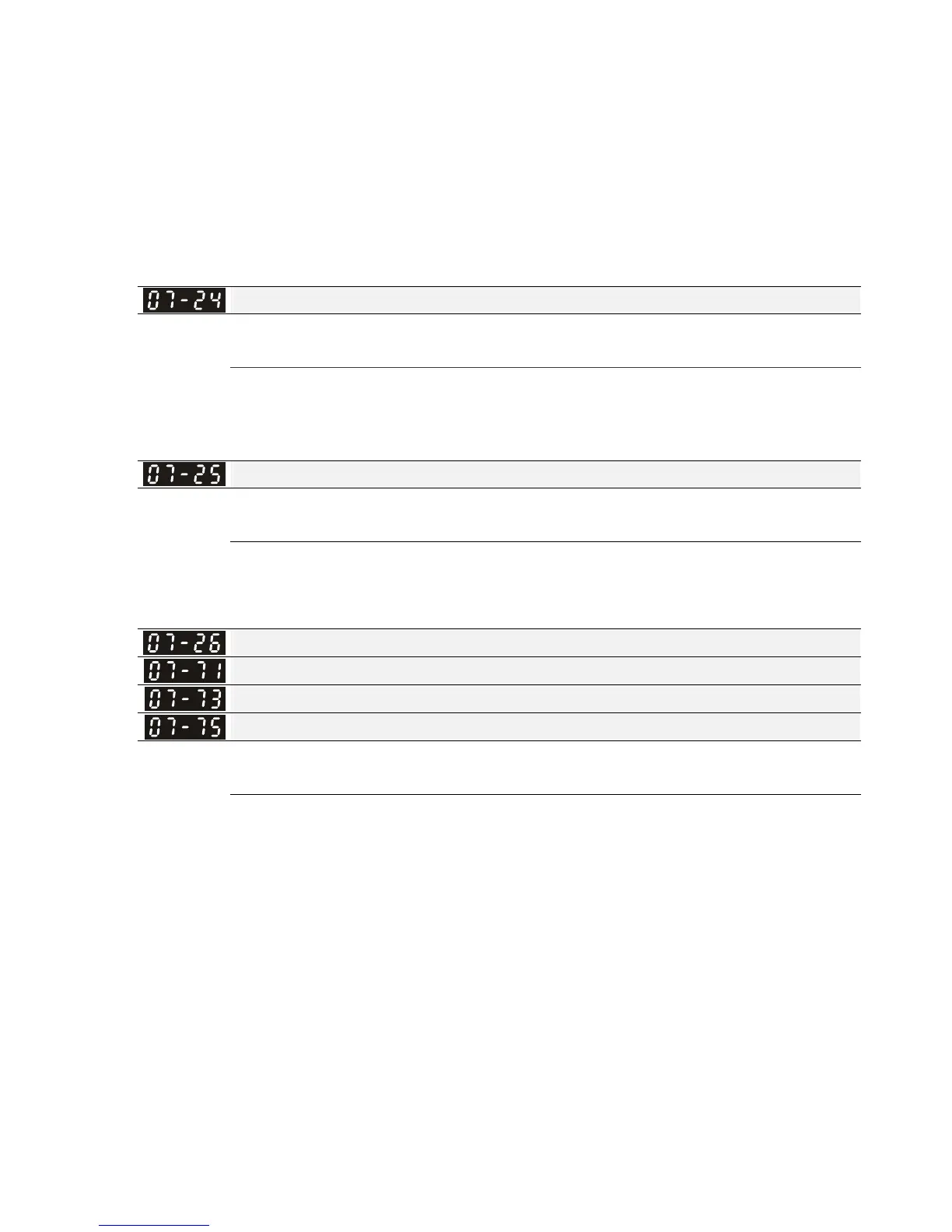